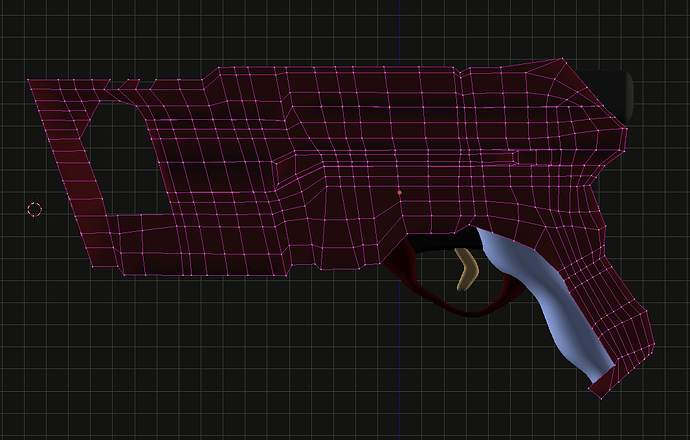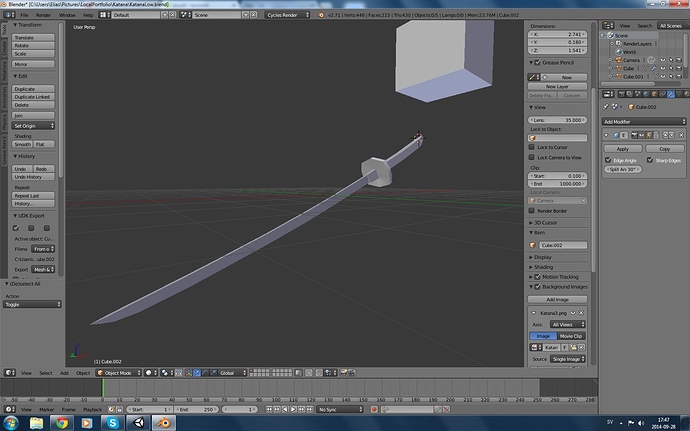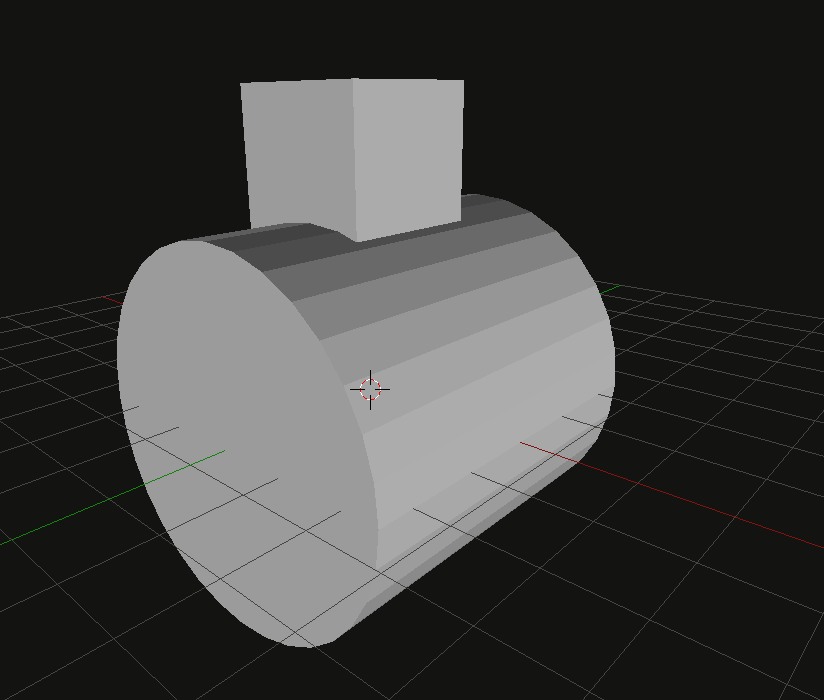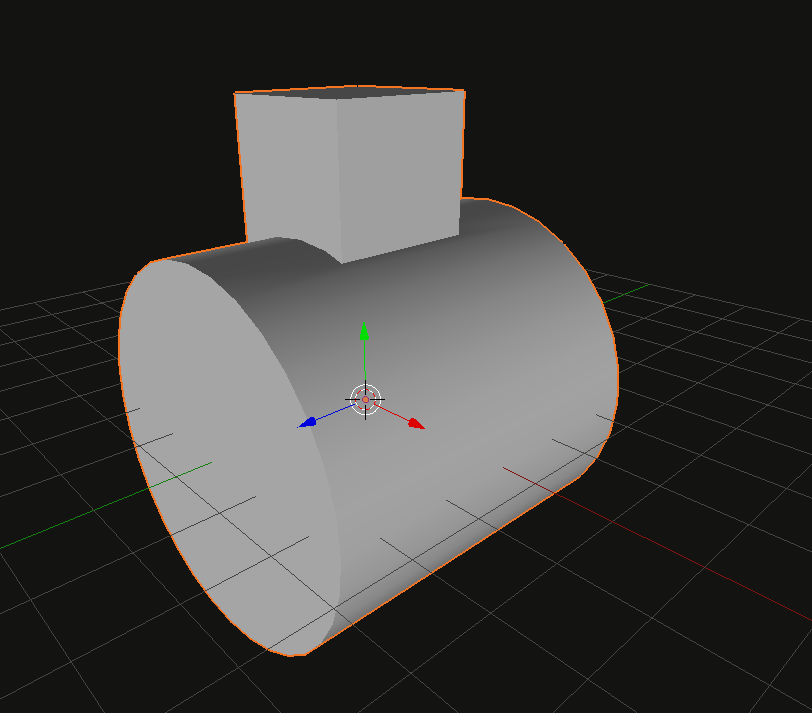Thanks for taking the time to check that. Will try too go through the model and “clean it up”
Heres what i did so far, i’ll drop a link to the updated .blend so you can look at it for reference.
Notice how i added in quite a few loops, but thats necessary sometimes to get everything flowing. theres still a few topology issues, but for a hard surface model it shouldn’t be an issue at all.
subdivision gives a more predictable result now:
And is much easier to control. if you want certain parts to be more curvy than others, you can manipulate the underlying mesh to give more gradual curves. if you want hard lines, you can throw in extra edge loops (ctrl + r) and edge slide them up close to but not overlapping the edge you want to be sharper. etc etc.
Heres the .blend:
https://www.dropbox.com/s/t76awsyhnllbtat/ScifiGunAdjustments.blend?dl=0
A question what is a good thing for me to practice modeling?
something that you have a strong interested in and understanding of. so that you can stay interested in your project! if you love cars, try to make a car, if you love sci-fi space ships, try to make one, if you love characters, dont worry about the perceived difficulty and jump in etc etc. start on something simple and work up from there.
also. dont race the imaginary clock. modeling is an art. there’s no time limit unless you have a deadline, and if your a newb, you shouldn’t have a deadline. slow down and pay attention to the process. inspect your topology as you go and ask yourself how you can make it nicer, ive been known to spend 3 hours refining the shoulder and hip regions of a character model that was going to be clothed anyway, just because it made me feel better to get it all “right”. haha!
going slow while your learning will let you speed up and still get stuff right the first time as you progress. its worth it to learn things the right way!
have fun and keep asking questions.
Ok I tried modeling a katana cause I have a strong interest in basically all things japanese but how many polys are too many polys? And how can I clean my topology and remove unnecessary polygons. And where can i find textures for steel and stuff searched cgtextures but is it easier just to do it in cycles?
polycount is something that depends on end use. if you plan to just display renders or maybe use it in an animation/film (or market the asset to someone doing that), then the poly, or “tri(angle)s” count is not as important. but if it was say: for a game as a character weapon. you would want to try to keep the polycount as low as you could. 2-3,000 tris per “detailed” prop is a good target for modern PC and next gen console games. some would argue that polygons on screen are not nearly as critical on modern graphics hardware as they were 5-10 years ago, and thats mostly the case. but any system is gonna chug a little when you get 4-5 million polys rendering at one time! haha
unnecessary topology is any topology that does not contribute to the overall profile of the model in some way. on something as straight forward as a Katana, i would say avoid subdivision modifier and just go for smooth shading + edge split modifier, and you should be able to get the correct result with minimal topology. as for ‘cleaning’ the topology, the best way to learn is to post pictures of your mesh in edit mode so everyone can see the topology and point out things for you to look at. there is no one correct way to “fix” problems, each solution you will learn will have a time and a place you can use it effectively.
a steel swords texture is based mostly on reflection, so you are probably better off using an anisotropic shader for the steel, and load up an environment map on the background (an actual environment map in the background material slot, not just an image texture on an object! haha) so it has something to reflect, and you should get realistic, or close to realistic results. when you make your UV map, and paint your texture, just make the steel all one color, medium grey. the shader can do the rest. you can paint in some scratches, and maybe the temper line on the katana as well if you want, added details = better!
post some pictures of the model in edit mode so we can see the topology! if you dont have puush, its an awesome little tool that lives in your system tray and lets you quickly take screenshots and they auto-upload to your puush account, from there you can insert the URL to the image on this forum easily.
Ok i will try to avoid the Subdivision surface but how can i make my handle/grip round without it?
And what does Edge split actually do?
If i was doing it, i would make the handle from a cylinder primitive and join + weld it to the guard/blade. can scale to a oval shape (katana handles are actually somewhat square with deeply beveled edges, so you could also just bevel the edges of the handle! haha)
and edge split, well, literally splits the edge. it has to be the last modifier in the stack or you can have problems with others. and dont apply it! haha. let me illustrate:
Simple boolean union of a cube and a cylinder. notice how you can see the facets of the cylinder. this is in “flat” shaded mode, which is how your scene should start out.
This is the same object simply switched to “smooth” shaded mode (flat and smooth are the top options in the shading tab of the T tools menu)
Same object again, with an edge split modifier added, nothing else. notice how the facits of the cylinder are now smooth as if you had applied a subDivision modifier, but you get a nice crisp edge at the ends of the cylinder and at the joint between the box and the cylinder? and it maintains the same geometry, instead of gaining far more with something like a subdivision modifier.
An alternative to using the Edge Split modifier is the autosmooth functionality :

similarly to the edge split modifier you can play with theh angle, or/and you can select edges you want sharp and CTRL+E -> Mark sharp
yeah, thats actually a good thought too, i had forgotten about that option myself! haha. as with most open source software theres 2 or more ways to do many things because coders toss it in, it gets added to the main trunk, and documentation never includes it, or relates it to the other known ways to do the same thing. lol. thanks for pointing it out, as its a better option than edge split by far!
edge split accomplishes the same effect, but by physically separating the edges that fall above the threshold. the normal smooth option does not, so you don’t have to worry about modifier stack order as you do with edge split.






